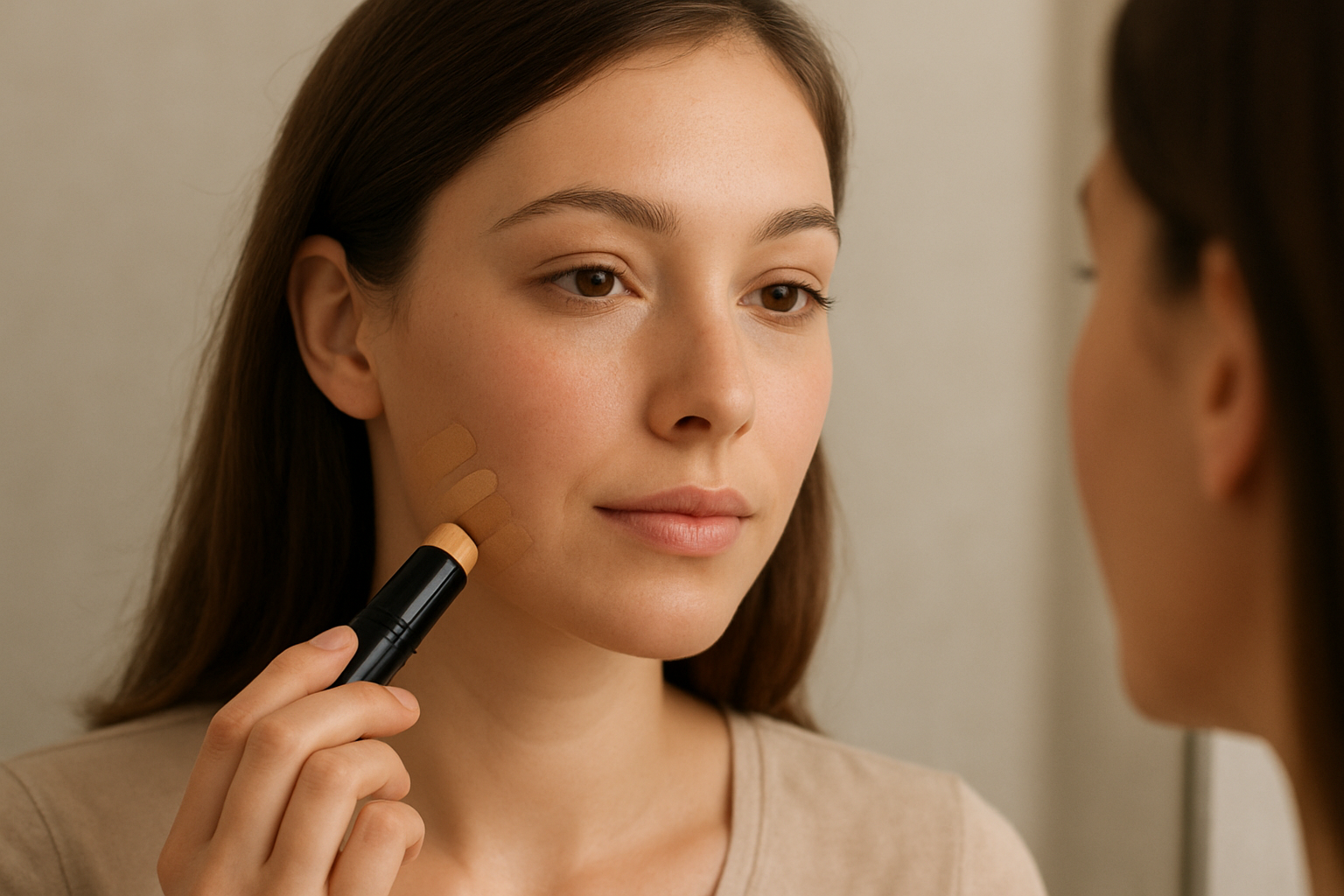Foundation is often considered the most important step in any makeup complexion look, but choosing the wrong shade can make your face look dull, ashy, or mismatched compared to your neck. With so many products on the market, it can feel overwhelming to find the perfect match. The good news is that by understanding your skin tone, undertone and texture needs, you can easily choose a foundation that enhances your natural beauty.
This guide will help you make confident choices when selecting foundation, helping your skin look naturally radiant.
Identify Your Skin Tone
Your skin tone is the general color of your skin: fair, light, medium, tan, or deep. Knowing this helps narrow down your foundation options.
- Fair/Light skin: Usually burns easily and can appear pink or very pale.
- Medium/Tan skin: Warmer, golden, or olive hues are common.
- Deep/Dark skin: Rich in melanin, with shades ranging from mocha to espresso.
Test foundations on your jawline rather than your hand, as your face and hands often have different tones.
Understand Your Undertone
Undertones are the subtle colors beneath your skin that affect how foundation looks on you.
- Warm undertone: Your skin has golden, yellow, or peach hues. Gold jewelry usually flatters you.
- Cool undertone: Your skin has pink, red, or bluish hues. Silver jewelry looks best on you.
- Neutral undertone: A mix of both warm and cool. Both gold and silver jewelry suit you.
Pro tip: “The undertone is what really determines whether your foundation looks natural or not,” says professional makeup artist Lena Martin. “When clients tell me their foundation looks too gray or orange, 90% of the time it’s because the undertone is off, not the shade.”
Quick test: Look at your veins in natural light. Greenish veins suggest warm undertones, bluish veins suggest cool and a mix indicates neutral.
Match Foundation to Your Neck
One of the most common mistakes is choosing a shade that matches only the face. To avoid a visible line between your face and neck:
- Swatch two to three shades on your jawline.
- Blend lightly and wait a few minutes.
- The shade that disappears seamlessly into your neck is the right one.
- Always blend a bit down your neck and along your hairline for the most seamless finish.
Consider Your Skin Type
Different foundations perform better depending on whether your skin is dry, oily, or combination.
- Dry skin: Go for hydrating or dewy formulas like liquid or cream foundations.
- Oily skin: Choose matte or oil-free foundations to control shine.
- Combination skin: Go for lightweight, buildable formulas that balance hydration and oil control.
Expert tip: According to makeup coach Daniela Reed, “Instead of fighting your skin type, work with it. A matte foundation on dry skin will cling to texture, while dewy formulas on oily skin may separate. The key is balance.”
Choose the Right Formula
Beyond color, texture and coverage matter:
- Sheer/tinted moisturizers: Great for natural looks.
- Medium coverage: Evens out tone while keeping skin looking like skin.
- Full coverage: Ideal for occasions when you prefer more coverage.
- Stick foundations: Convenient for touch-ups or travel, ideal for normal to combination skin.
Test in Natural Light
Store lighting can be misleading. Always check your chosen shade in daylight to ensure it looks natural. If possible, step outside or near a window after applying a swatch.
“If you can, apply the foundation and step near a window or even outside,” suggests professional artist Marina Lopez. “Artificial lights often make shades look warmer or cooler than they truly are.”
Don’t Be Afraid to Mix Shades
Sometimes, one foundation shade isn’t enough, especially if your skin tone changes with the seasons. Mixing two shades can give you a custom match and ensure your complexion always looks natural. Keep a slightly lighter and darker shade on hand to adjust throughout the year: skin tone can shift with sun exposure or weather changes.
You Might Want to Keep Away from:
- Choosing too light: Can make your skin look chalky.
- Choosing too dark: Creates an unnatural contrast with your neck.
- Skipping undertone match: Even the right shade can look wrong if undertone doesn’t align.
- Applying too much: Less is more; apply gradually and blend well.
Applicators for Flawless Application
- Fingers: Great for lightweight, natural finishes.
- Brushes: Ideal for even coverage and precision.
- Sponges: Perfect for blending and seamless results.
Always dampen a sponge before use to avoid absorbing too much product.
Final Thoughts: The Right Foundation Makes All the Difference to Rock Your Look
The right foundation can enhances your overall look and help your natural beauty shine through. By understanding your skin tone, undertone, and needs, you can confidently choose a foundation that blends naturally, feels comfortable, and makes you look radiant.
Makeup artist Sofia Blake sums it up perfectly:
“A great foundation should disappear into your skin: you shouldn’t see it, only your natural beauty shining through.”
Remember, makeup is about celebrating your features, not masking them, so go for the shade that makes your skin glow effortlessly.
